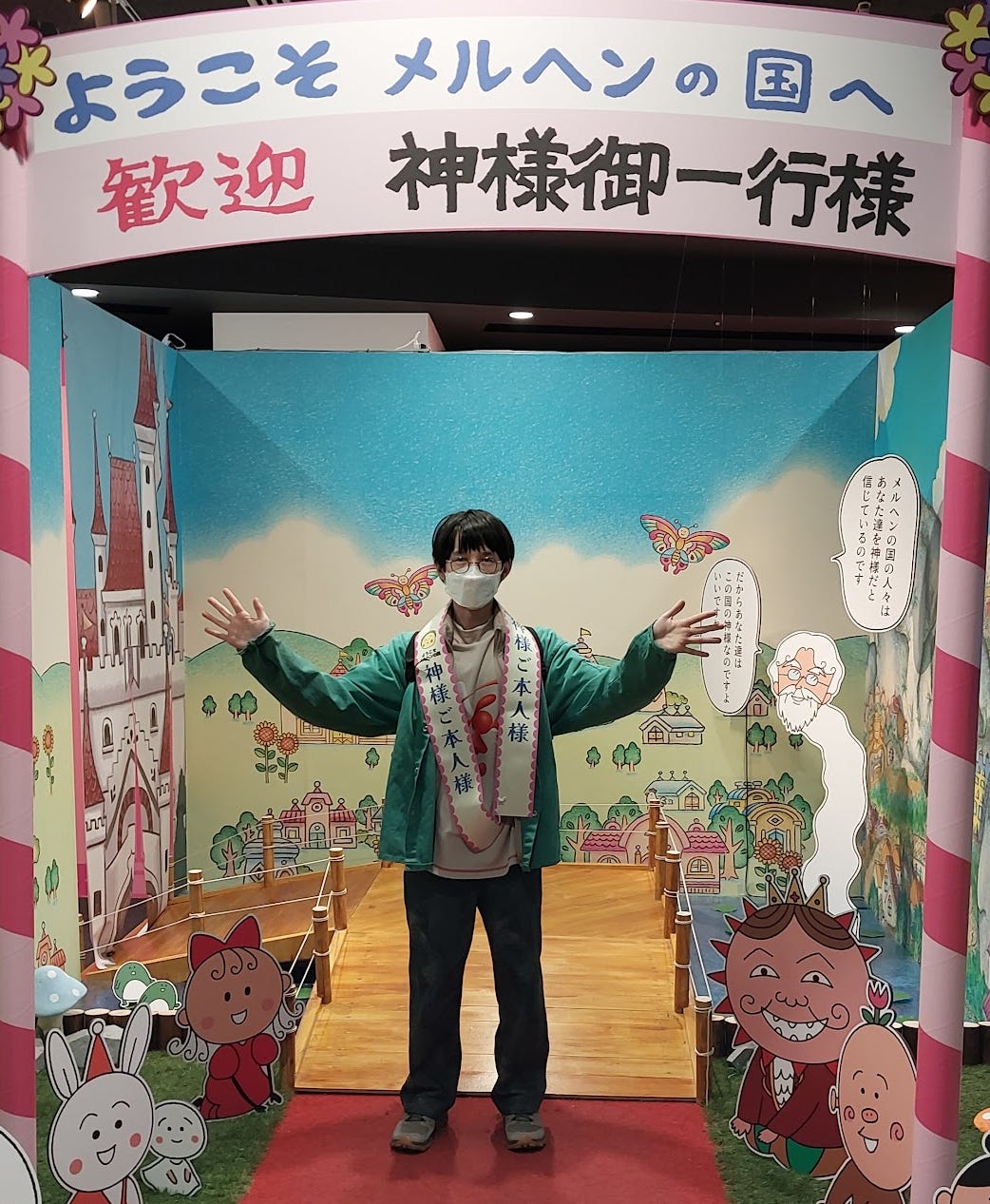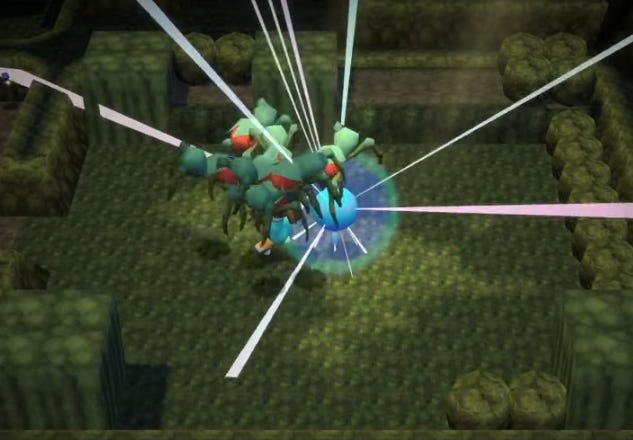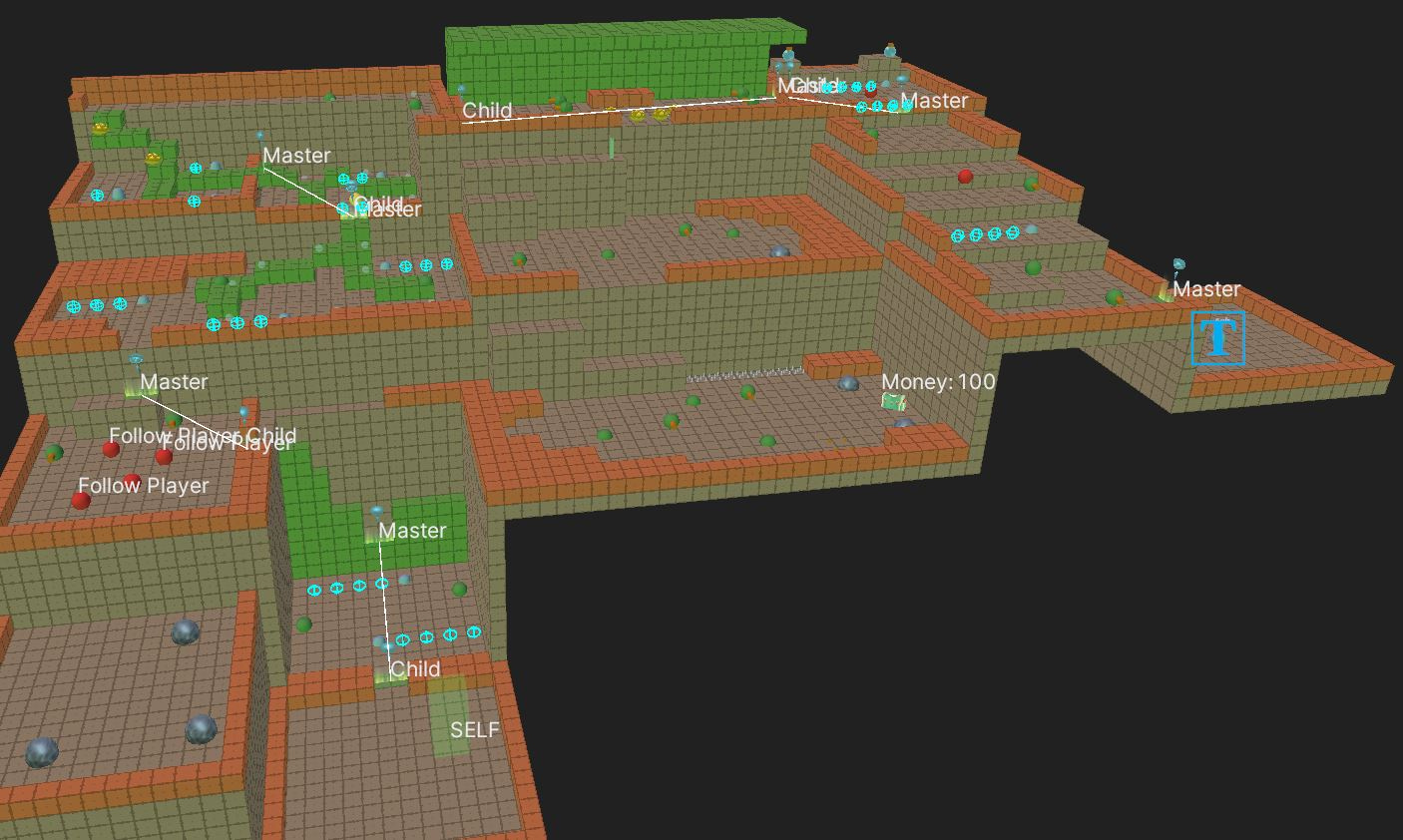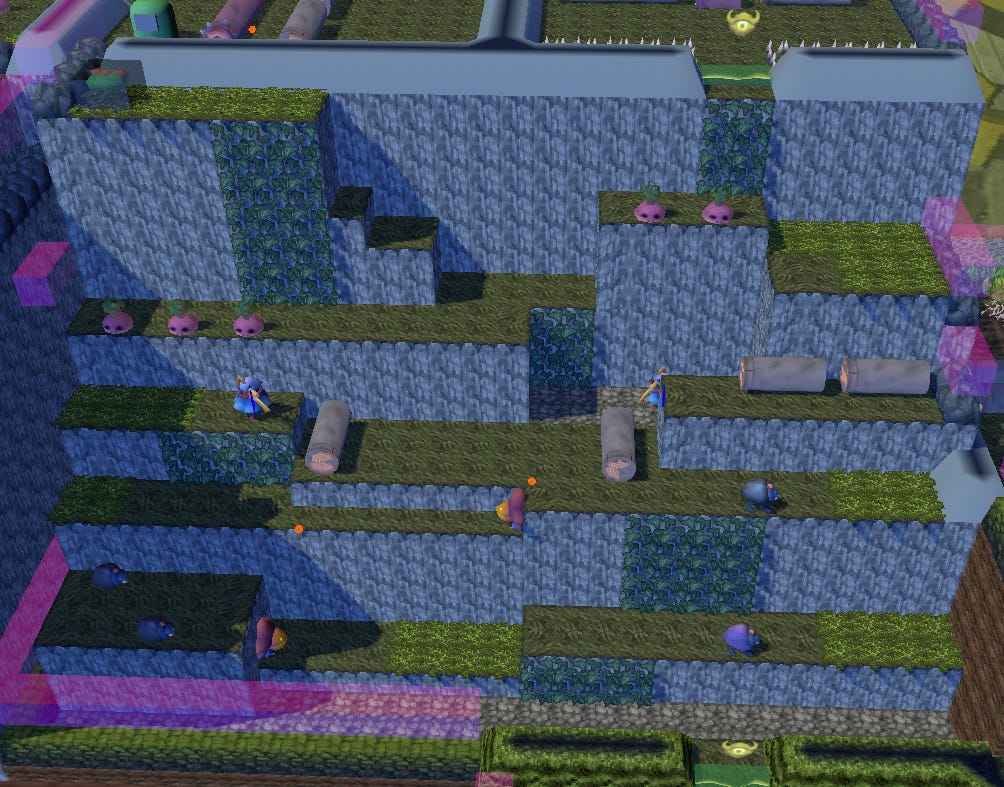The Book of Bumpslash: Action Level Design
A detailed write-up about the process and design of the Action Levels in Angeline Era.
The Book of Bumpslash is a (in-progress, as of 1/15/2025) book about the entire design of Angeline Era, an action-adventure game coming 2025 with a demo on Steam. This post is one part/chapter of that book!
About half of the levels in Angeline Era (AE) are Action Levels. In the context of AE, we call these Scale Levels. They’re mostly linear, featuring anywhere from 6-10 or so distinct combat rooms. Clearing it gets you a Scale, which can be used to level up and increase your stats. Check out 13:14 (couldn’t clear) and 50:15 (cleared it) for my playthrough of one of the demo’s Scale Levels, “Dreaming Cradle" — it’s an early-game level.
How do I design effective Scale Levels? First, it relies on an effective combat system at the core, and for there to be a coherent Enemy and Room Design philosophy (for a level is composed of Rooms, in AE.) At one level higher than levels, the game has to have a robust “world system” for the levels to fit into — “world system” is the way the player reaches levels, what the overall arc of the game is aiming for, etc.
This post will touch on these subjects but the focus will be on the level design. The hierarchy of systems is as follows:
Core Combat/Movement → Enemies → Rooms → Levels → World
(If you were to actually draw out this diagram, I think you’d find that it’s not necessarily a hierarchy. But for simplicity it can help to think of the game this way.)
For this chapter I’m focusing on best practices discovered while creating, revising, and playtesting the Scale Levels. I also want to be clear that I’m speaking mostly within the context of AE. I don’t expect all of this to generalize to other action-adventures. If you were to change some aspect of the above hierarchy it might generate different needs.
Now, when it comes to designing the Scale Levels I tend to work in this order.
Determining the Level’s Context (Coming up with a general rough concept for the level)
Outlining (Planning the level on paper or in very rough passes in Unity)
First Draft + Self-Testing (Actually making the level, without art)
Revisions + Gathering Feedback (Seeing how it holds up with others, or my future self, and then revising things if needed)
Determining the Level’s Context
Taste: You can’t make levels without this. Imagine Mario Maker levels. They’re all the same mechanics, right? But levels can come out vastly different. Usually the memorable ones are the ones where the designer is clearly fixated on something…
No matter the genre, I think a good level designer has to have a sense of taste and a sense of humor. If you’d like, you can get a sense of what I like from playing the demo. But put short, my rules of thumb for a Scale Level are “feels good on the hands, but unique in contrast to the rest of the game” and “deepens the worldbuilding of the universe of Angeline Era,” and “kind of goofy…"
There’s also types of action I like (Ys 6, Janky 3D (Brightis/Evergrace)), sorta-like (Souls, bmups, shmups, other arcade-y action), and don’t like (Character Action, Fighting, Parry, Gacha-Action). Honestly I go between thinking that something like parries are worse than other games, but also sometimes I wonder if game preferences are merely like fetishes. In that we acquire them during childhood based on random formative gaming moments (and the physical/emotional sensations of those moments) and then that’s kind of just our dice roll for adulthood and I never got bit by the parry bug LOL
Anyways,
World Map Placement: Say that I know the world map has some farmland areas, so perhaps I’d know I need to design something farmland-like. Or I might have a farmland idea and know there’s room for it in the world map. It’s help to have lots of personal photos to go through or a wide spatial vocabulary obtained by taking trips, walks, exploring, going outside, touching and enjoying the texture of a wide variety of rocks, maybe standing on them.
Difficulty: The difficulty curve in AE is relatively gentle for the first 30 or 60 minutes. From that point on, you could say the late-game areas are a bit harder than the mid-game, but it maintains a fairly flat level of difficulty, focusing more on uniquely difficulty challenges rather than ‘objectively harder’ challenges.
There is some artificial stat inflation for late-game levels, but that is more to enforce a sense of pacing to the game, and it doesn’t take too much leveling to reach that curve. There are a handful of levels that I deliberately made much harder (e.g. Open Season in the demo) but they’re the exception. The combat system of AE is inherently interesting with different level mechanics, so for the most part I just needed to come up with levels that were ‘hard enough’ and the rest sorts itself out.
Enemy Palette: By having so many enemies to pick from (around 30-40?), and knowing which parts of the world map they tend to appear in, this helped me narrow down the potential enemies to use to create the level’s “Enemy Palette” (like a color palette.) Some enemies are more lore-appropriate for early-game farmland (like the little bugdogs or turnips), others are better for other parts of the game. Note, that if I know the combat system (bumpslash/gun/jup) is robust, this makes it easier to pick enemies for levels, so long as those enemies have been designed enough to work. (Sometimes you need to program an enemy and try it out in a level before you figure out the best design for that enemy)
Note: It’s best to think of the above as rules of thumb. For some levels — especially earlier on in development with less of the world fleshed out — I’d start with outlining or making the level without knowing necessarily where the level would be in the game. For AE, the earlier on in a game a level was made, the more likely it would require revision.
Outlining
Next I start to write down ideas on paper or sketch stuff in the Unity editor.
Concept - This takes the form of some imagery or idea after sitting down to brainstorm. For example, the video above of Dreaming Cradle, the idea was “descending into a pit in a cave…” with “many spiders”, and a surprise ending where you stumble upon a nest of spiders. Real life reference helps here. I’ve been in a few touristy caves, so that helps with thinking about “oh, stuff would fall from a ceiling” or “there would be layered passageways” or “sharp drops in height”. It helps to tactilely have an intuition for the kind of level I’m going for, even if it’s going to be shoved into this fairly strict shape of an AE Scale Level.
A rule of thumb I came up with later is: “Would some moment of this level make a cool melodramatic yet humorous illustration?” Take this Link’s Awakening one, illustrating jumping over a pit with a chicken:
If a concept can accomplish that, or if the final level accomplishes that, then it means the level has both a memorability and emotional quality to it, which is good.
Height Flow - This one is kinda technical lol. But I found it helpful to know how up (or down) the level needs to go. Do I need some room ideas that can handle transitioning to a room 1, 2, 3 or more - tiles upwards? What about downwards? AE doesn’t play well with the camera going lower with the player moving north. There’s ways to work around most situations, but it does really help to know the general “Height Flow” of a level. The level could stay flat (farm), or it shifts up and down slightly (forest), or it goes up (hill), or it goes down (cave), or it’s vertical (tower), etc… To some extent the a core pillar of a level (and thus perhaps, of the game story and world) can be found within its height variation.
Sam Holden has an essay on slopes with a section with some interesting thoughts and quotes on slopes:
Shunya Yoshimi - When we climb up slopes, our minds are preoccupied with the obstacles before us, and the anticipation of cresting the hill. It is only upon starting to descend that our attention can turn towards the wider landscapes around us, which often hide a rich collection of surprises.
Does every good game have height variation? Perhaps. A wise man once said that “There is no Tall Tall Mountain without its shadow self, the Dire Dire Docks… no Tower of Druaga without the Dungeon beneath Trebor’s Castle…”
Room Ideas - I try to brainstorm around 6 combat room ideas: combinations of enemies that seem fitting. I have a lot more to say about this subject in another post — like deciding whether a room is weird, easy, full of obstacles, puzzly, atmospheric, or which enemies open the Eye Gate — but I’ll leave some thoughts here:
In Dreaming Cradle, room ideas could be
Spiders falling from the ceiling after defeating a bugdog!
A sideways corridor of spiders
Bugdogs and Wall-Gunners greeting you at the entrance of the cave
I try to keep in mind the enemies I want to use here, how hard the idea might feel in practice, and the rough 3D shape of the room. Most rooms tend to be pretty flat, but I try to add in other geometry and height difference when I can.
The main rule of thumb with rooms is to not overdo it on the enemies that track the player’s position perfectly. A blend of player-tracking and other types of enemies is usually more interesting, although sometimes a room full of player-tracking things is really good.
I also try to come up with 1 or 2 weirder or funnier ideas that aren’t necessarily combat, but would be good for worldbuilding reasons. In this case it’s stuff like those fake-treasure dead-ends, or the room where you can’t see anything. A hardcore player might remember really hard rooms on high difficulties, but the average player tends to remember these sorts of interesting one-offs or moments.
I find that having these room ideas help with making a first draft of the level, when more improvisatory ideas come up. These are ideas I didn’t plan for, stuff like like the sequence at the end, where the spiders jump at you while you’re getting the scale, or all the chests with tiny spiders.
I try to set myself up with decent ideas so that I can have a good, playful level drafting process, but I’m also not too attached to making sure every one of these ideas comes out exactly as how I have it on paper, or that I use them at all. Outlining is necessary, but it should not be constraining: instead it should lead to and enable future, unplanned decisions.
First Draft
By the time I’m in the Unity Editor, placing down debug tiles and enemies based on my outline, I’ve already thought of a loose structure for the level. To double check the feasibility, I’ll sometimes use my level editor tool to make an in-game Outline of the level. What does this look like? Imagine this photo with ONLY the brown and grey blocks. In other words, empty.
With my paper outline, and the in-game block outline, I’m able to get a sense of the level’s flow and shape. This helps with picking which enemy rooms I should put in first.
With some levels it’s easier to pick which enemy rooms go where. Other levels requires a bit of playtesting on my part. I try not to finish the work day without the whole level being playable from start to finish. This usually takes me around 2-4 hours with breaks in between. Sometimes new room ideas, or one-off enemy behaviors extend this time. If I can’t use an idea and it seems fruitful I might note it down for a later level.
By having the level done in this rough state, it lets me get a sense for its pacing and difficulty, which means that when I test it later, I can make better revisions and additions.
Sometimes I’ll stub in potential item locations, but for the most part those all get added in later.
Room Size
The size of rooms matters a lot. All rooms in AE are some multiple of 14x14 cubes, usually just 14x14 though. The outer border is often reserved for invisible walls, so that gives 12x12 to work with. Some rooms are extended in a direction to be 28x14, or 14x28, etc.
14x14 was chosen early on as a size that doesn’t feel too big to walk between, and a size that can be adjusted to feel smaller by bringing the walls in. Some enemy room ideas work better in big rooms, some work better in small rooms. Using the Dreaming Cradle level from the start of the post as an example, you’ll see a variety of room shapes on display, with different obstacles. Some have more uneven terrain, others are thin, or have some verticality, alternate exits, etc.
In terms of Room Size with Angeline Era, I’d say that smaller tends to be utilized more. Combat is interesting when enemies threaten space, and the size difference between 12x12 (144) (not counting the outer walls) and 10x10 (100) is immense, and it’s easier to make enemies synergize in slightly smaller spaces. That being said, sometimes a long and narrow corridor works well, and big rooms can be useful too.
Ultimately if the room size is within a decent range the game will probably work. It’s only if the decision is way off that you’d run into trouble (imagine trying to make an Angeline Era level with the current combat system if rooms could only be 8x8 - you’d need a new camera system and probably art style)
Camera Angles

Most rooms use a camera-to-player (what I call “body”) angle of 45 and a camera-look angle of 45. The camera distance and FOV is chosen to make the perspective illusion not too strong, while showing a bit of the rooms to the left and right and top, but not much to the bottom.
This is a good blend with letting the spatial qualities of the level stand out, while being readable from a movement and combat standpoint. Earlier on the angles hovered around 38-41 (I think the demo is still like this) but at some point I shifted those to be a bit steeper. Overly shallow angles can make depth hard to read.
On the other hand, overly steep (top-down) angles make your height hard to read, so it’s no-good for enemies requiring hitting them in mid-air. However, erring on the side of steep angles over shallow angles tends to work better for Angeline Era.
I have tech added that lets us customize camera angles per room, so sometimes we can be more atmospheric, etc. But for most Scale Levels it stays around the standard angles and distances because the focus is on action.
Either way, it’s nice to have tech that lets you customize the camera because you never know when you’ll want a level to have a little bit of extra atmosphere! It can go a long way.
Room Entry Position
Generally speaking it’s best to not design AE levels with rooms going from top to bottom, since AE’s gun only shoots up. In rare cases this is unavoidable due to the level concept, but I keep it to a minimum. This is why most scale levels are staircase-like from front to back.
Additionally! This was a detail I didn’t pick up on until tester feedback on the demo last year, but it feels a bit better if there’s bumpslashable enemies (or shootable enemies) positioned close to where you enter the room - reducing the downtime between hitting enemies. This means that the Z (the axis going from front to back) position of the room entrance matters. The ideal is having the entrance being towards the front of the room, as it gives more opportunity to quickly use your gun. But as with any rule it’s not great to always follow it, but to use it as a guideline and vary from it creatively.
Verticality
A tricky subject. So here’s the thing, platforming really doesn’t work well in AE’s top-down 3D perspective. Personally I love a weird isometric jumper… but I also understand that platforming isn’t quite the point of Angeline Era, so when I do really want verticality I take some care to make it easier to traverse.
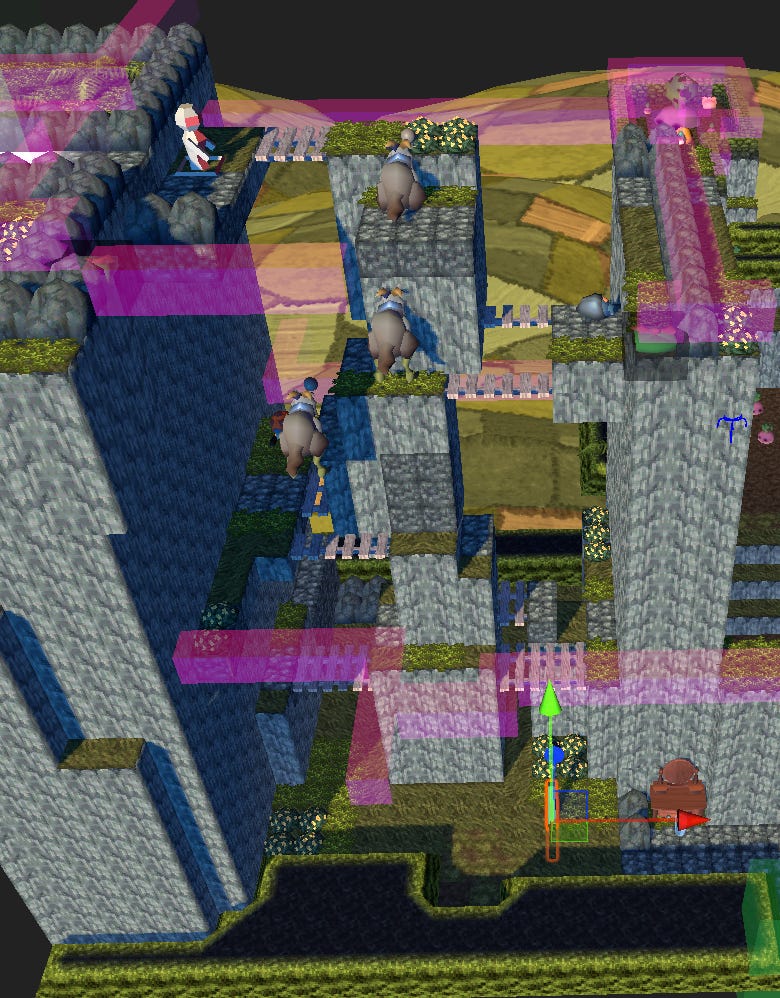
I really really wanted a level that felt like Meadow’s Whimsy (above) so I was stubborn on making it work. I mean it’s a 3D game, right? Why pass up on that opportunity. Part of me actually still has an itch that was not scratched by AE when it comes to verticality and janky jumping. Alas.
I tend to be more conservative with verticality in Scale Levels because the height differences and uneven footing mess with the combat balance. For example, this part in the Stubborn Highroad level is about as extreme as verticality goes in the game for Scale Levels:
There’s not many opportunities for falling down as there were in the Meadow’s Whimsy screenshot.
Also, the above room doesn’t actually require you to kill any enemies to exit. So it’s more of a obstacle-course style room and you don’t need to bumpslash stuff if you don’t want to. Most of AE’s scale levels tend to put changes in height along the borders of the room so as to be more readable, or keep changes in height only at 1 or 2 cube heights. This, maybe, is the curse of a commercial game. IF I HAD IT MY WAY YOU’D BE BUMPSLASHING ON 1x1 PILLARS WHERE YOU CAN FALL BACK TO THE START OF THE LEVEL!!! In other words, if Angeline Era sells enough to give me a financial break I will make “Fucked Up Angeline Era.” It’s funny how things normalize to you. AE is a bit harder and much weirder than the average action game but now I want something even more extreme…
Cut Idea - Alternate Exits
For a while some levels had alternate exits that would open up additional paths on the world map. For the most part these were cut. They made more sense when there was more of a puzzly-explore aspect to the world map but the focus of the game just shifted enough to render them obsolete. I think a version of AE that somehow had shorter action levels or more of an exploration focus could probably find a good use for alternate exits.
What I Looked for When Revising
Levels tend to be best when revised at least once or twice with some time in-between first drafts and revisions. Here’s a few things I would keep in mind when doing revisions:
Difficulty
Since I got good at the game, I would use a few things to prevent myself from making the level weirdly hard - mainly, to think about the levels in the demo which have been thoroughly played and tested. Was something feeling like it was around the level of River’s Rest (The demo’s first level?) - too easy. Around Open Season? (Too hard.) A much better range of difficulty for the average level would be the other two Scale Levels in the demo, Stubborn Highroad and Dreaming Cradle.
This is similar to a technique musicians use for making music, where we keep a song on-hand that’s use as a reference, either for sound palette, or loudness, to know if we’re making a song in the right style or loudness for the game.
Room Clarity
The game works better when each room has a clear idea. It’s hard on a first draft playthrough to get a sense of what ideas could be clarified by moving the enemies around, making some faster or slower, or replacing, removing or adding enemies. For example, a room might have a combination of enemies that don’t seem to be doing much for each other… imagine a bunch of regular bugdogs and bats sitting side by side in a flat room. It would feel better if you added level geometry or some hazard or changed the room size so the threat of bugdogs actually had interesting overlap with the threat of bats swooping.
Rearrangement
I got better as time went on, but I noticed that levels I drafted in mid/late 2023 (and revised in mid 2024) were a lot more in need of heavy rehauling than the levels I did first drafts of later. This would sometimes require cutting out entire portions, compressing parts of the levels, etc. I think if I had playtested more aggressively and sooner I could have figured out more of this faster, since most of my learning came from the demo testing and public play period (since April/May 2024).
Style/Worldbuilding
I don’t think I had time to do this as much as I wanted, but on later level revisions I tried to emphasize more worldbuilding. Making something feel more foresty, or cavey... adding NPCs or interesting moments. Accentuating certain enemy layouts to be more extreme or memorable.
Conclusion
It’s worth keeping in mind that much of this advice may not generalize outside of Angeline Era. Most of these decisions are built upon the combat fundamentals and exploration direction of the game, as well as my personal taste. Note that most of these decisions we / I only could arrive at after seeing other people play the game or hearing feedback from Marina. The most general advice on making Angeline Era would have been to show friends/devs the game sooner rather than later, until arriving at a confident level design style. Although, perhaps we should be getting feedback on the game’s other levels now…! But there’s only so much time…
Some notes on coming up with Level Design direction, that I learned from AE:
If the game has bigger levels (which are ALWAYS the most tempting to daydream about) save those for later because it’s impossible to nail those if the level design philosophy for a small level isn’t robust. It just results in lengthy rewrites down the line. This happened to me around 3 times in AE.
Fun twists like secrets, alternate exits, weird offshoots, improvisatory design, or alternate styles of level design (like non-scale level): it’s good to write these down somewhere for later, but also not let it constrain the development of the level design style. You can always revise these ideas (or come up with other ideas) once the direction of the levels is clearer.
And that’s it for this chapter! Please subscribe for free for more posts on game design (and upcoming chapters/posts about Angeline Era.)
(And check out Angeline Era on Steam!)


